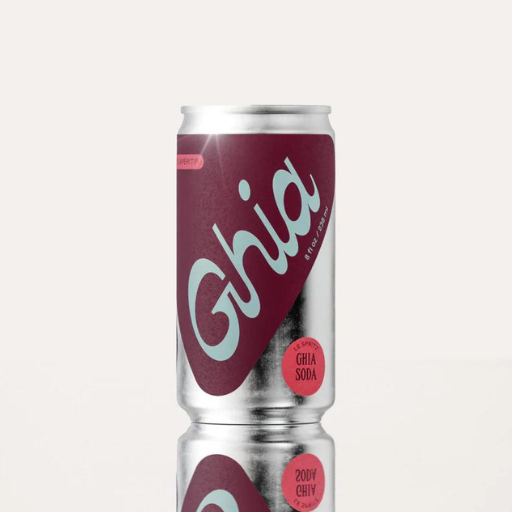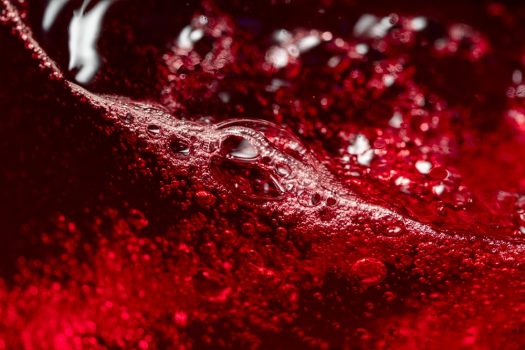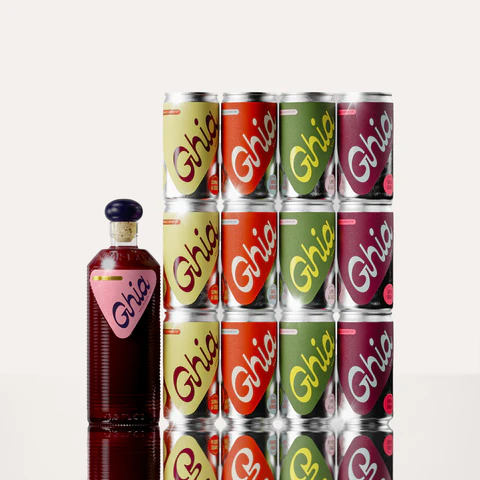Bitter Bliss or Pricey Pour? Unraveling the Ghia Soda Enigma

In a world where social drinking often revolves around alcohol, one woman’s vision is reshaping the landscape of libations. Melanie, the founder of Ghia, has embarked on a mission to reclaim the word “drinking” from its alcoholic associations. Born from sun-drenched Mediterranean memories of homemade limoncello and the cherished tradition of Aperitivo, Ghia represents more than just a beverage – it’s a philosophy, a lifestyle, and a bridge between past and present.
Ghia’s inception is rooted in the simple pleasures of connection, laughter, and savoring moments with friends and family. It’s an homage to those languid summer evenings where time seems to slow, and conversations flow as freely as the drinks. But Melanie’s vision goes beyond mere nostalgia. She sought to create a drink that could transport you to that idyllic space of conviviality without the numbing effects of alcohol – a drink you’d remember clearly the morning after.
Enter Ghia Soda, a non-alcoholic apéritif that promises to deliver the sophistication and complexity of traditional spirits without the buzz. It’s a modern adaptation of time-honored recipes, designed to facilitate connection, mark the transition from work to play, and provide a moment of self-care in our fast-paced world. But does it live up to these lofty aspirations? Can a non-alcoholic beverage truly capture the essence of those Mediterranean summers and the ritual of Aperitivo?
In this review, we’ll dive deep into the world of Ghia Soda. We’ll explore its intricate flavor profile, assess its packaging and presentation, and determine whether its price point aligns with the experience it offers. As we unravel the Ghia Soda enigma, we’ll consider both its triumphs and its potential shortcomings, providing a balanced perspective on this intriguing newcomer to the non-alcoholic beverage scene. Whether you’re a curious teetotaler, a health-conscious socialite, or simply someone looking to expand their drinking horizons, join us as we sip, savor, and scrutinize Ghia Soda – the drink that aims to redefine what it means to raise a glass.
Taste Profile

Pros:
-
- Complex flavor profile that mimics traditional apéritifs
- Vibrant citrus notes from yuzu juice provide a unique twist
- Well-balanced bitterness from gentian root extract
- Subtle herbal undertones from rosemary and elderflower
Cons:
For those seeking an elevated non-alcoholic option for special occasions or as an alcohol substitute, Ghia Soda could provide good value. However, the high price may deter regular consumption and could be hard to justify for consumers accustomed to lower-priced non-alcoholic options.
Conclusion

Ghia Soda offers a unique and complex non-alcoholic apéritif experience, successfully capturing many elements of traditional alcoholic counterparts. Its sophisticated flavor profile and convenient packaging are definite strengths. However, the assertive taste may not appeal to all palates, and the premium pricing could limit its market reach.
For discerning consumers looking for a high-end, non-alcoholic alternative, Ghia Soda presents an intriguing option. Yet, its niche appeal and price point may restrict its broader market potential. Ultimately, the value of Ghia Soda will largely depend on individual taste preferences and willingness to invest in premium non-alcoholic beverages.
